This camera was one of several given to me recently by my dad. I have already posted on another from this lot – the Zeiss (Ikon) Contina 1 (522/24). The Kodak is by far the oldest of the batch, having been originally sold between 1914 and 1927. This specimen was mostly used by my grandfather, Cyril, a farmer in the Mallee district of eastern South Australia. I don’t know exactly when Cyril first obtained this camera, but my Auntie Yae sent me a collection of negs made with it, some of which we know were shot in the 1920s, though the exact year is not clear for all of them. I will present below images made by my grandfather and then some that I have made since restoring the camera, along with some notes about the camera and its restoration.
The No. 1A Autographic Kodak Junior shot 116 film, which was the first format of roll film ever made (1899 – 1984). At 70mm total width it is about 8mm wider than 120, which first became available in 1901 and is the dominant roll film format now. The camera shoots 11 x 6.5cm frames, and you can get six frames from a roll of 116 or 120 film. It’s a folder so it ordinarily folds into a very compact unit. The bellows on my grandfather’s model are cloth and paper, not leather. The camera body is mostly aluminium covered in ‘seal grain leather’ (whatever that is). It has two tripod mounts for horizontal and vertical shooting. The tripod mount on the ‘drawbridge’ or front door is so close to the body as to be unusable for my tripods. The ‘Autographic’ part of the name refers to a zany function available only with dedicated film, where you can write on the back of the film with a metal stylus, through a rectangular window in the back cover (opened and closed with its own metal door). The ‘autographic’ film stocks had a special layer on the back of the film that would allow light through to the film where pressure from the stylus was applied. This gave the photographer the ability to write some data directly on the film at the end of each frame after it had been exposed and the writing would show after development. Apparently hardly anyone actually used this function and Kodak eventually abandoned the idea.
The No. 1A Autographic Kodak Junior came with various different lenses. My grandfather’s has a Bausch and Lomb Rapid Rectilinear lens, which comprises two cemented doublets each side of the iris. Each doublet in the later model Rapid Rectilinear lenses apparently includes one element of crown glass and one of dense Barium flint glass. The lens is a symmetrical design and is uncoated. This design dates back to 1866 and is the same as the independently but almost simultaneously invented ‘Aplanat’ design. Some versions come with an Anastigmat lens, which, you guessed it, does a better job of correcting astigmatism. The Kodak Anastigmats are apparently very similar to a Tessar design.
I struggled to find a source that confirms the focal length of this lens! It’s not on the camera or in the manual. I originally assumed it would be around 100mm but Mike Eckman reviews a ‘No. 1A Pocket Kodak’ with an F6.3 Kodak Anastigmat lens which he reckons has a focal length of 127mm. It shoots the same frame size as this one.
The lens can be focussed from 6 feet (roughly 2m) to 100 feet (30m) (which substitutes for infinity) by sliding the whole lens board forward or backward while pressing a lever that releases a catch that fits into notches on the base plate corresponding to these two extremes plus four intermediate distances: 8, 10, 15 and 25 feet.
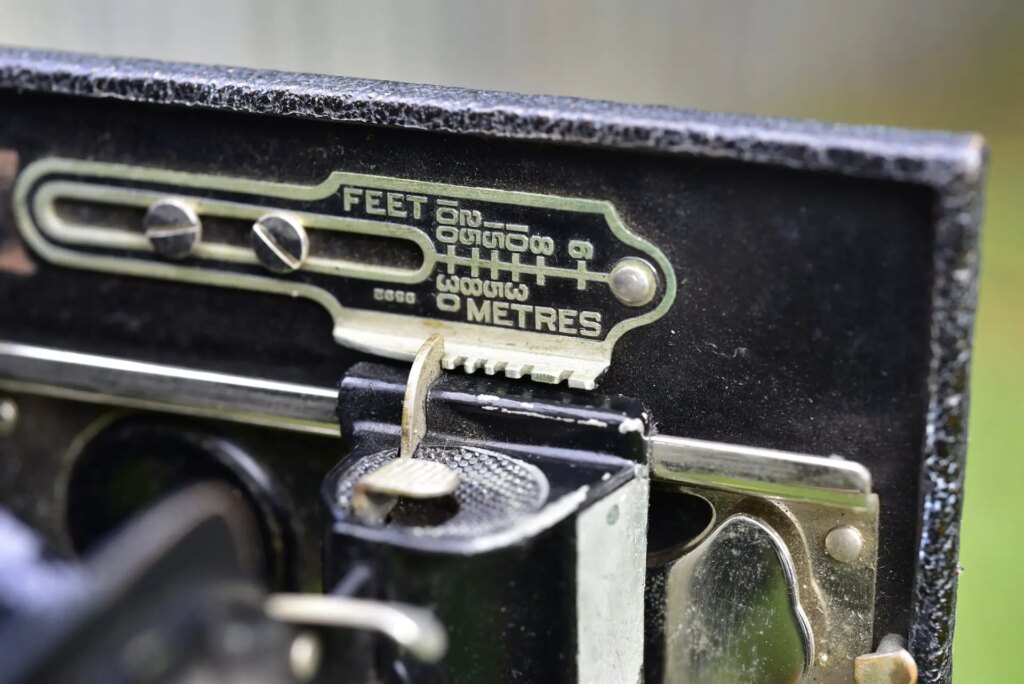
You frame your shot by peering through a tiny ‘brilliant’ finder mounted at the top of the lens board, which can be swivelled to allow vertical or horizontal shots. It takes some getting used to but once you get your eye in it’s not too bad.
The iris, which has eight beautifully rounded blades, is marked in ‘US’ stop numbers, which correspond to the numbers we mostly use now as follows:
4 8 16 32 64 (‘US’)
8 11 16 22 32 (‘Contemporary’)
I suspect that the maximum F-stop of this lens may possibly be F7.1 in the conventional numbering because it opens a smidge wider than the ‘4’ marking on the dial.
The shutter is a Kodak ball bearing shutter that has T, B, 1/25, 1/50, and 1/100 settings. It was the one part of this old camera that thankfully I needed to do no work on – every speed sounds right, and B and T both work as intended. It of course has a spot for attaching a standard mechanical remote shutter release, which I recommend using in preference to the lever, given the ease of introducing movement to the lens board when using the latter.
I had always intended to actually use this camera (after extensive renovations) and to my relief discovered that I could easily find and order online a set of plastic spacers that fit on the ends of 120 film spools to allow this smaller size film to be used in it.
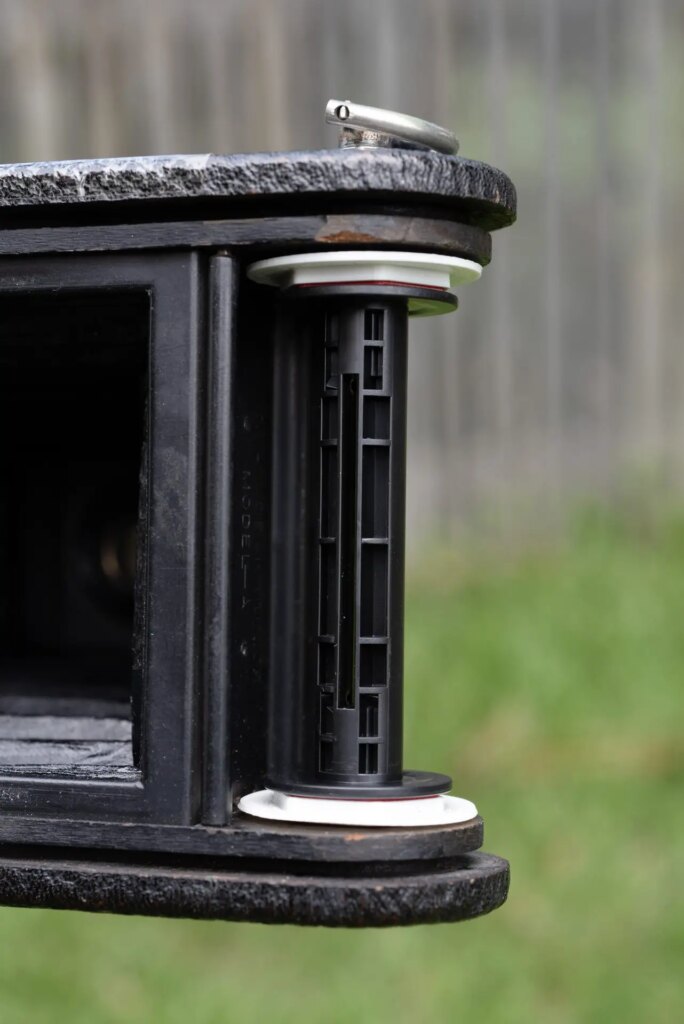
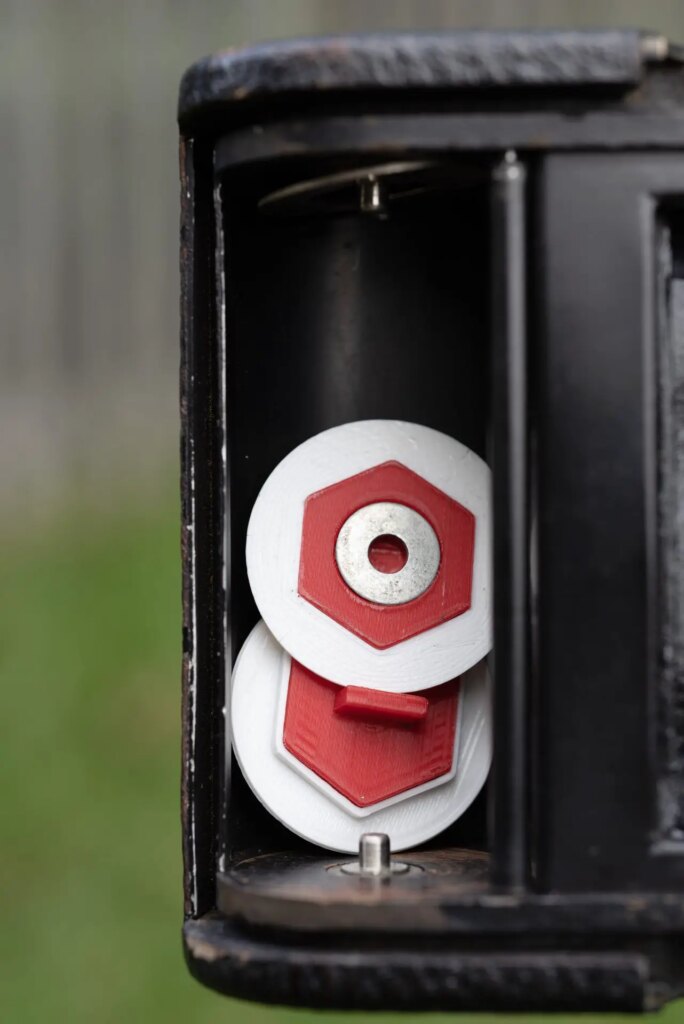
The problem here is that in this camera the slightly narrower 120 film allows light from the red window on the back cover (which normally allows frame counting using the numbers printed on the film’s backing paper) to get around the edges of the paper and fog the film. So you have to put black tape over the red window and instead carefully count the number of turns of the manual winder key to advance the film correctly. Here’s the drill:
After inserting the film leader into the take-up spool, turn it a half a turn to make sure it’s engaged, then close the back cover. Mike Connealy worked out that it’s eight and a half rotations to advance the film to the position where you are ready to expose frame 1. Each subsequent frame requires two and a half rotations of the key. I have modified this routine to using two and a half turns to advance to frames 2, 3 and 4, and then reducing it to two and a quarter turns to get to frames 5 and 6. This is because the increasing thickness of film on the take-up spool makes for larger spaces between frames at the end of the roll and if you aren’t careful your last frame might not fit in comfortably. I’ve also put a piece of black tape on one side of the film advance key to help keep track of how many turns I’ve done! When you’ve shot frame 6 you just wind on till you can hear that the film is fully wound on to the take up spool and you’re done.
Renovations
It’s pretty rare for a camera this old to be in perfect working order. My grandfather’s camera had seen at least three decades of work on a dusty Mallee farm, spanning the Great Depression and WW2, and possibly also WW1, though I haven’t seen negs from that period. It was pretty beaten up when my dad gave it to me. But the shutter was working fine. I was able to unscrew the inner lens doublet with a lens spanner and give that a good clean on both sides, and by opening the iris fully and opening the shutter on the T setting, I could clean the inside of the front group as well. I used black electrical tape to improve the light-tightness of the (rusting) edges of the back cover, and taped over the red window and the ‘autographic’ window for good measure (no use for that any more anyway). The bellows, which are made of cloth with an outer paper covering, were a total nightmare. They were riddled with holes. The paper covering was also disintegrating and flaking off, and I eventually decided to remove as much of it as I could. I used (the wrong) black paint for the holes – a random fabric paint I found online. It worked to block the light leaks, but, even after it should have been well and truly dry, it made the bellows stick together when I tried to fold the camera. I have since used a ‘Golden’ brand of ‘carbon black’ on other cameras with light leaks and that is way superior. To try to deal with the sticky bellows I applied electrical tape to pretty much the whole outer surface (and some of the insides) of the bellows. This made attempting to fold the camera even more difficult. So I have given up trying to fold it any more and have obtained a perfect size, cheap, lightweight plastic case with foam insert which the camera now lives in, fully open. The camera is light tight and takes pictures just fine so I’m good with this compromise. I also modified a nice slip-on hood for it (there’s no thread on the lens).
How about some images? Below are a handful of images made with this camera in the 1920s and ‘30s, followed by some images I have made with it since 2019. I have also included a couple of images of the envelopes the old negs were stored in. Most of my pics were shot at the 30m / 100 feet focus setting (unless otherwise specified) and metering was either incident with a Sekonic L-308x or reflected using my phone.
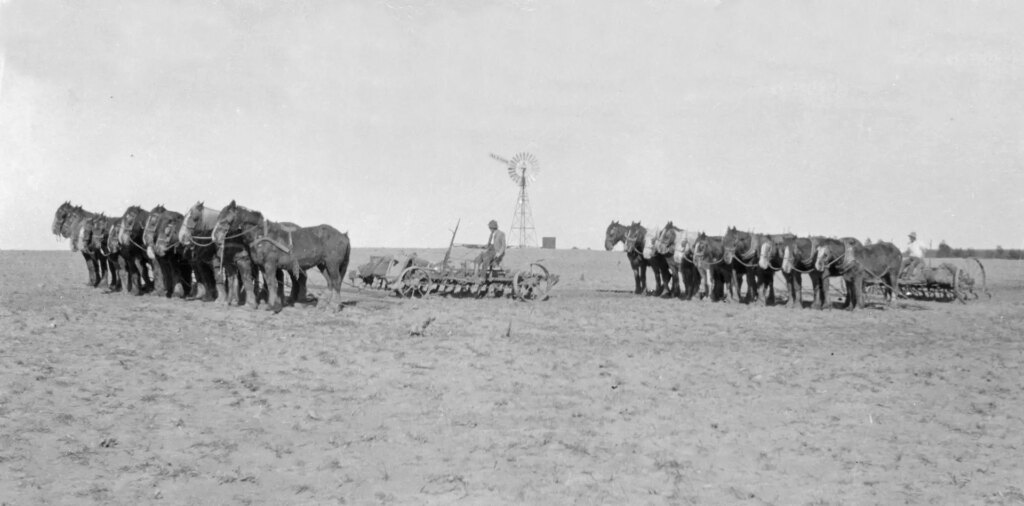
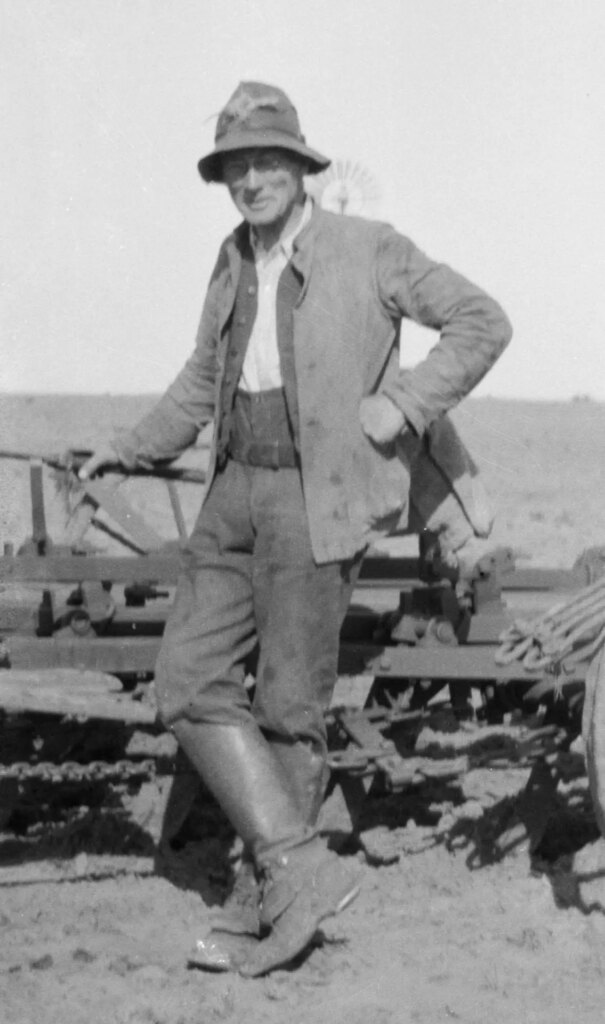
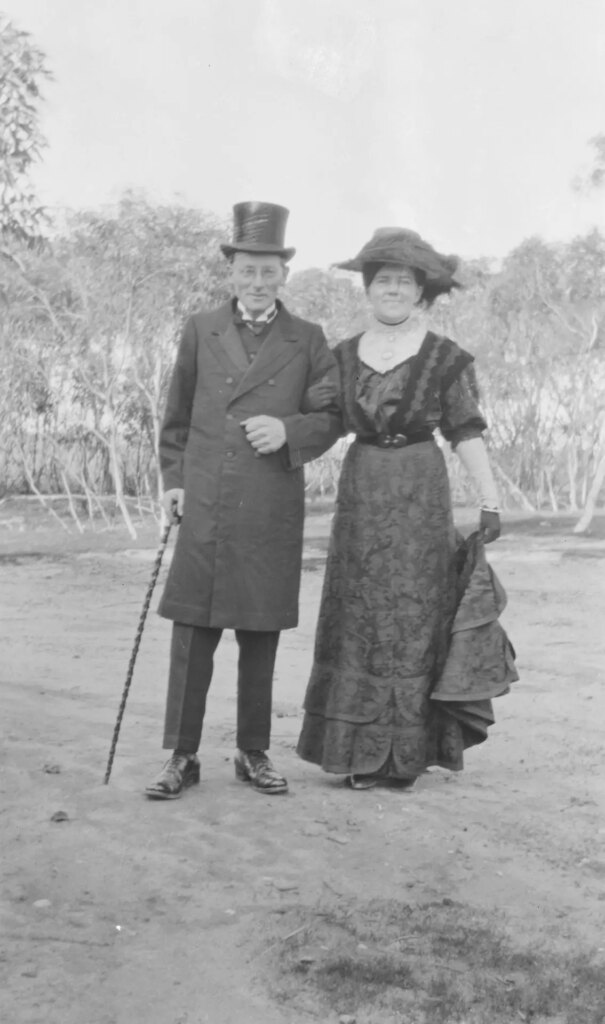
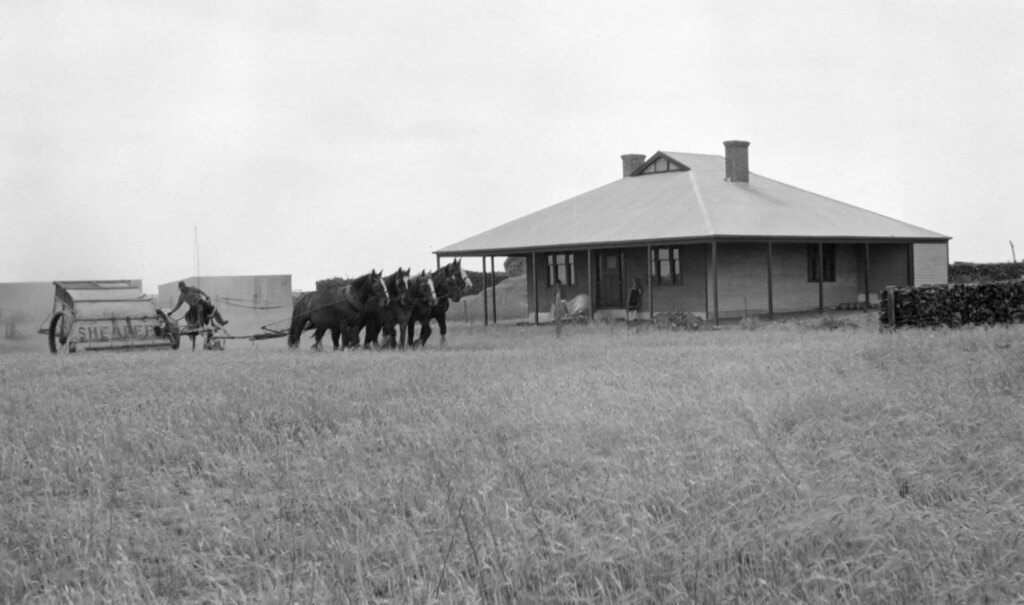
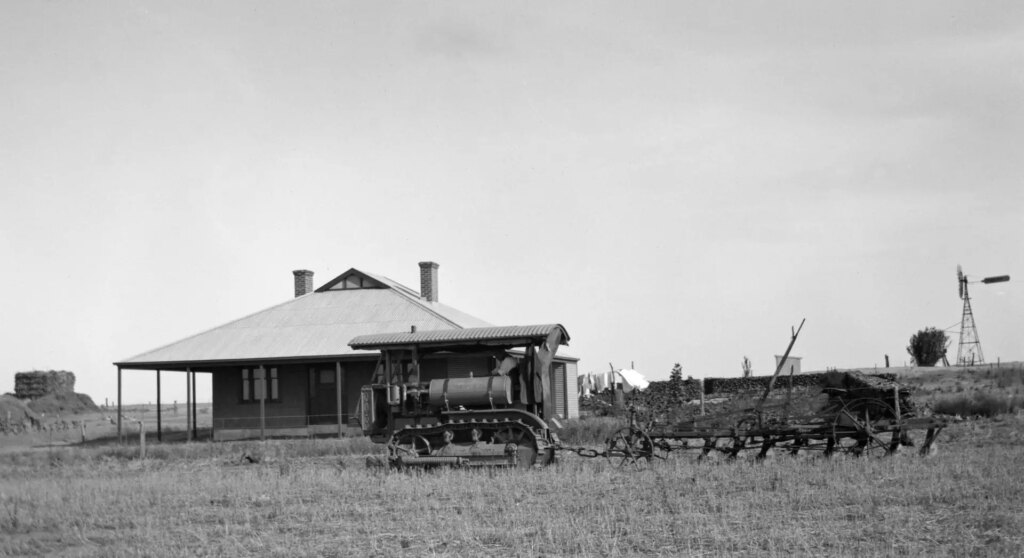
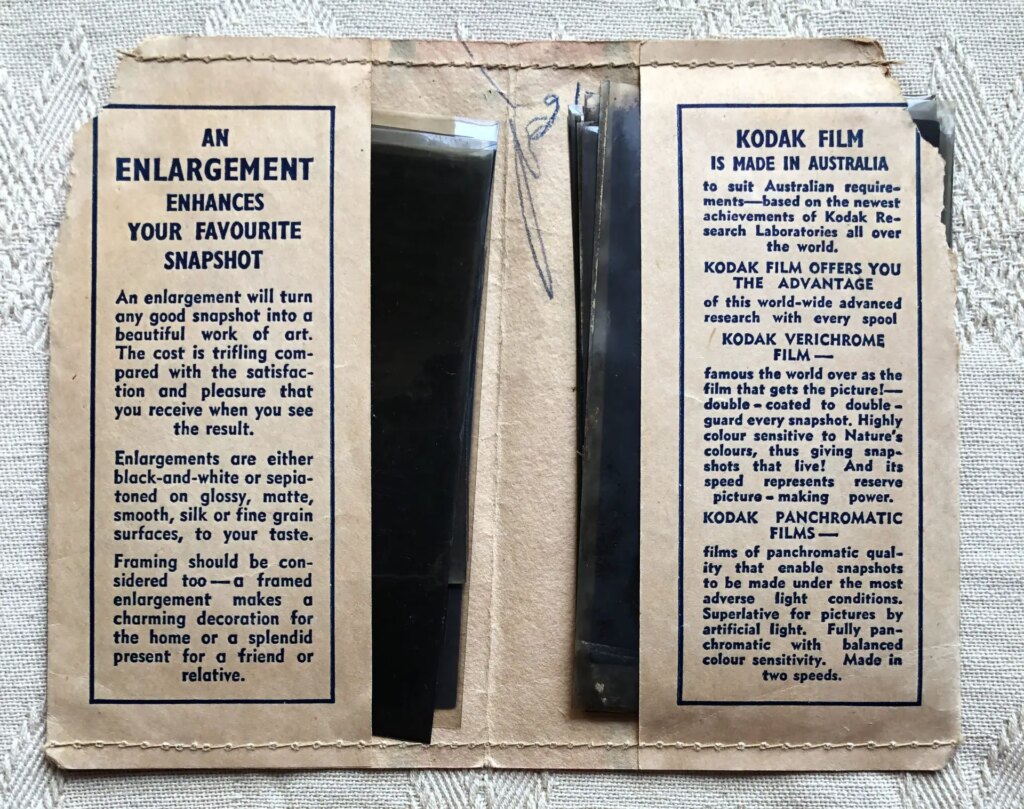
Most of the early pics made with this camera would have been shot on an orthochromatic film, possibly Verichrome, as suggested here. Since Verichrome Pan was not produced until 1956 it is interesting to speculate as to the age of the envelope – the text references ‘Kodak panchromatic films’ but does mention ‘Verichrome Pan’ specifically.
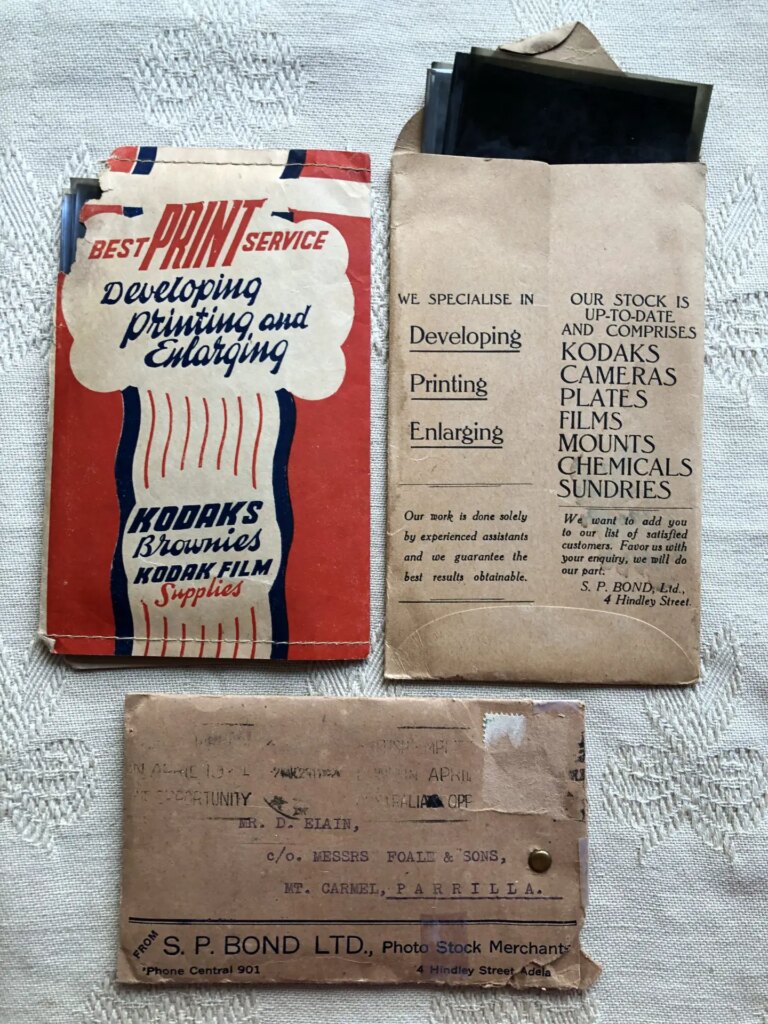
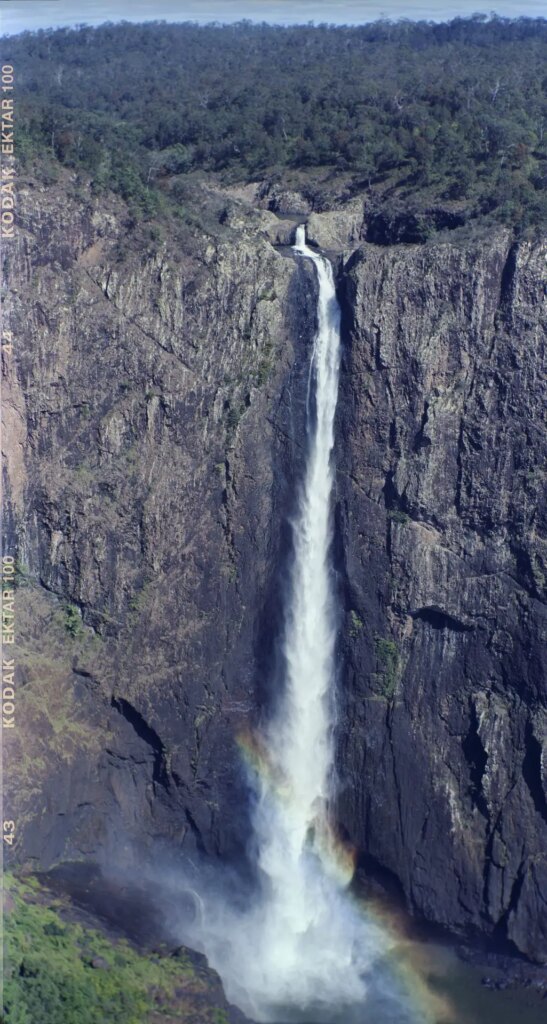
I actually had to ‘bracket’ composition with several frames to make sure I got the bottom of the waterfall in plus some sky at the top, as it was a tight composition, and not easy to frame through the tiny viewfinder. I scanned the negs on a Nikon Coolscan LS-9000. Because my scanner can’t scan a piece of film longer than 83mm I had to scan the 11cm negs in two bites, and stitch the images in post. You can see that the quality on the edges is not terrific, even at F22, but it’s quite decent for most of the frame.
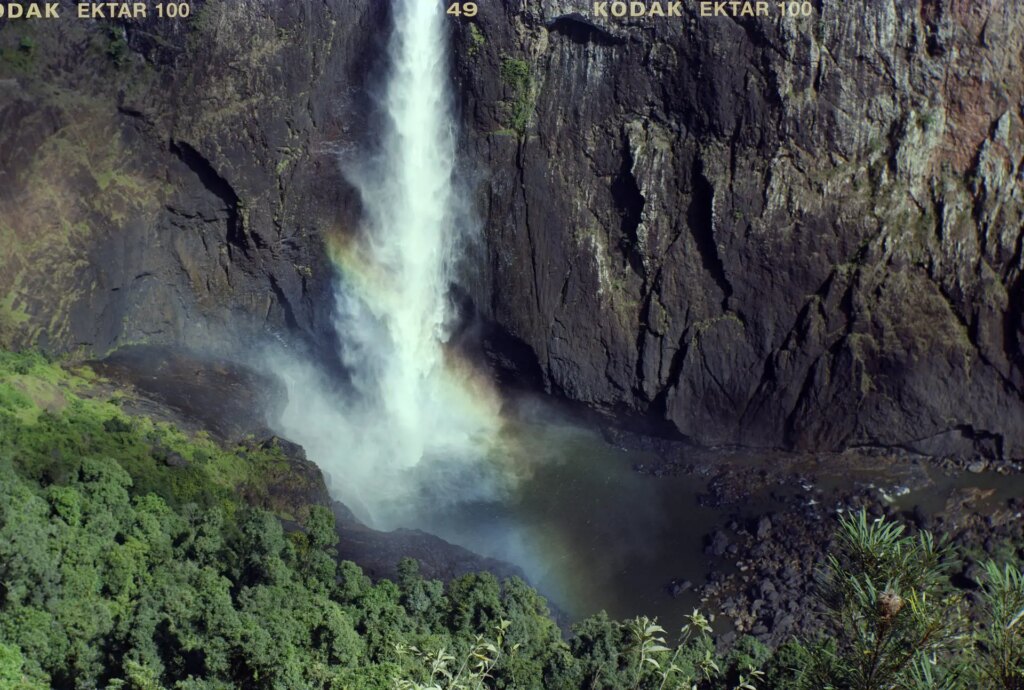
I’ve just scanned the central 83mm of this image, as the edges weren’t important. I can see nothing wrong with the colours delivered by this very old, uncoated lens.
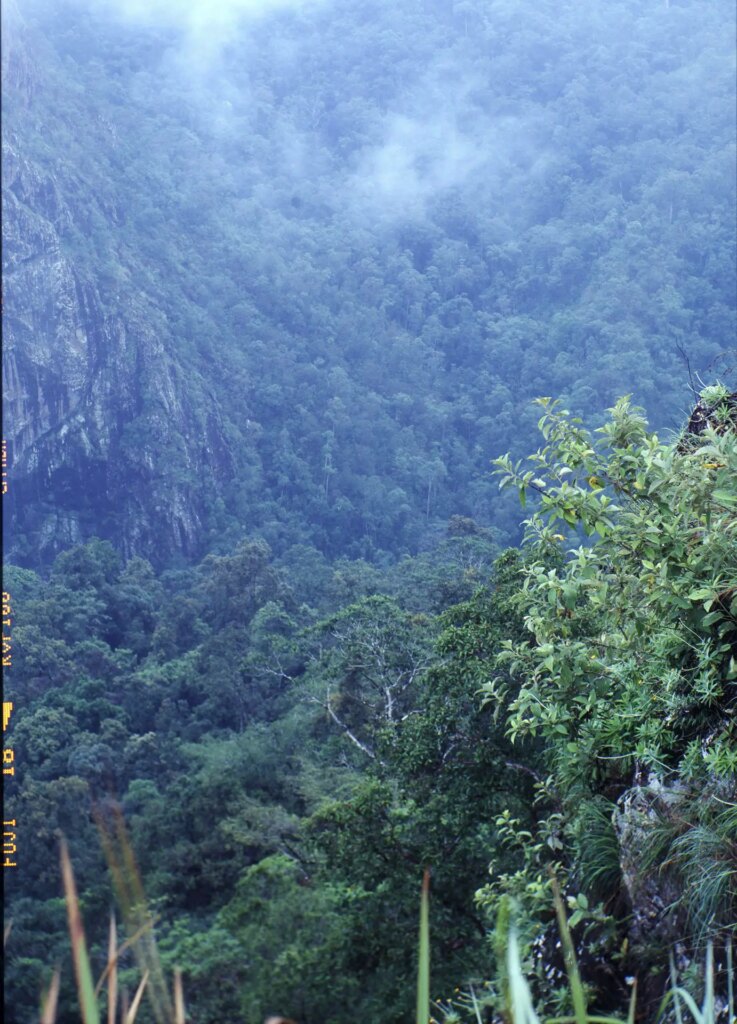
After this shoot I discovered that using the shutter lever instead of the remote shutter release is not a good idea, because the lens board is not very rigid, and the slightest movement from touching the lever can blur the image.
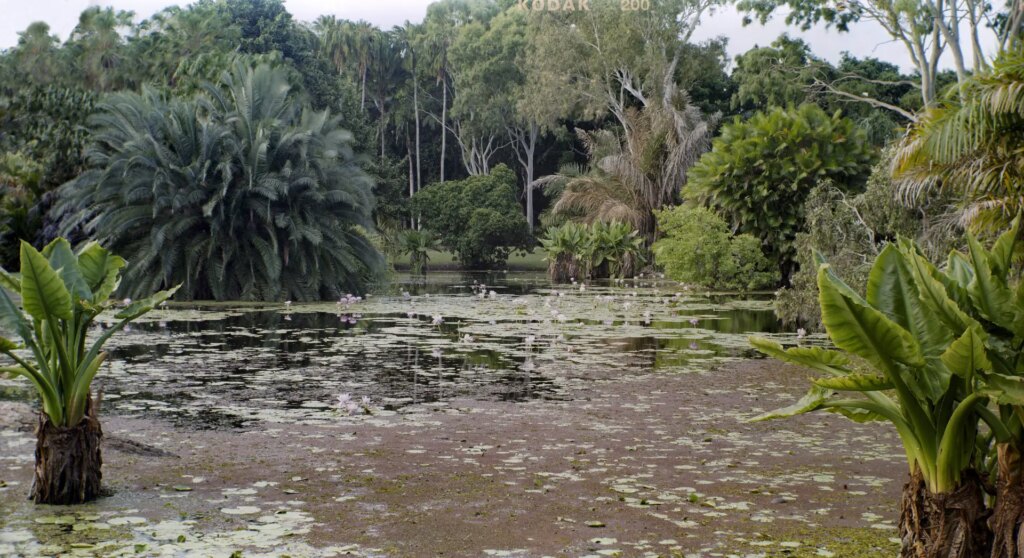
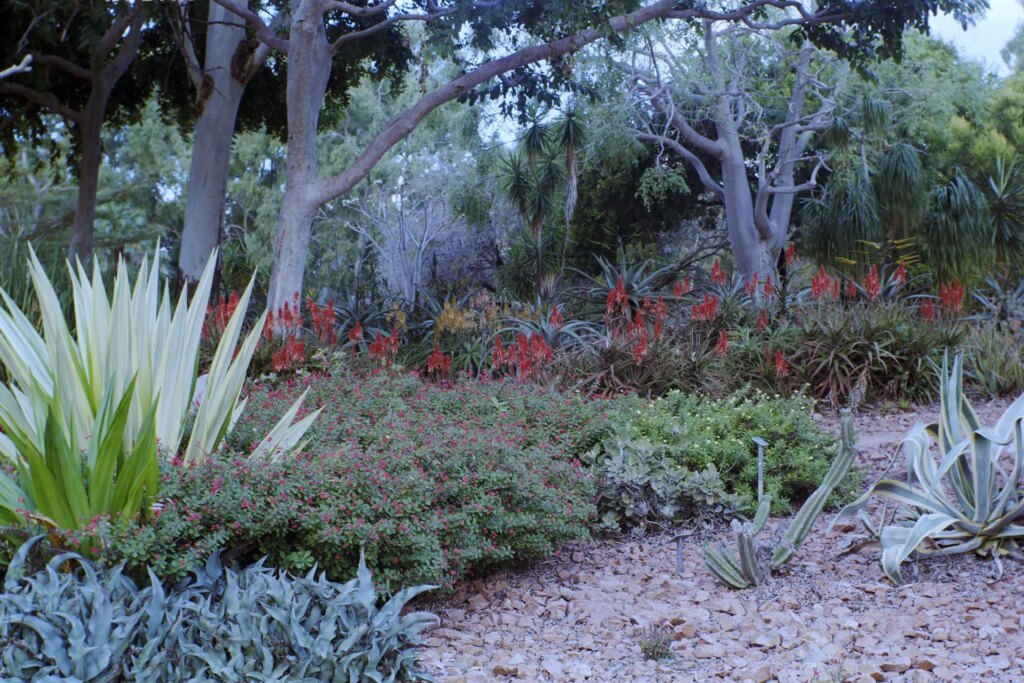
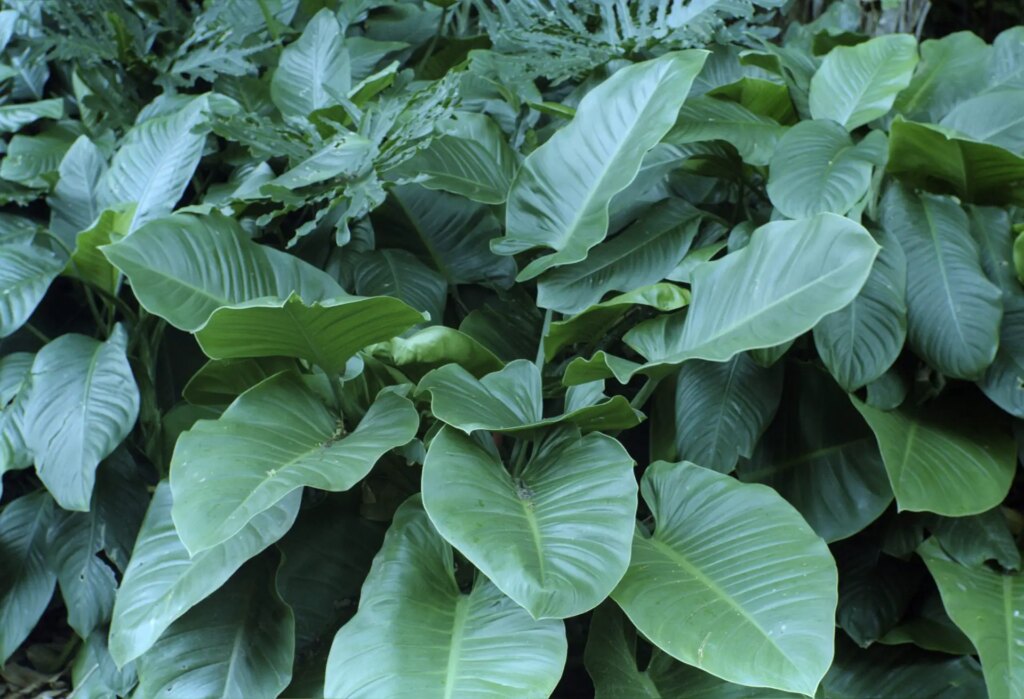
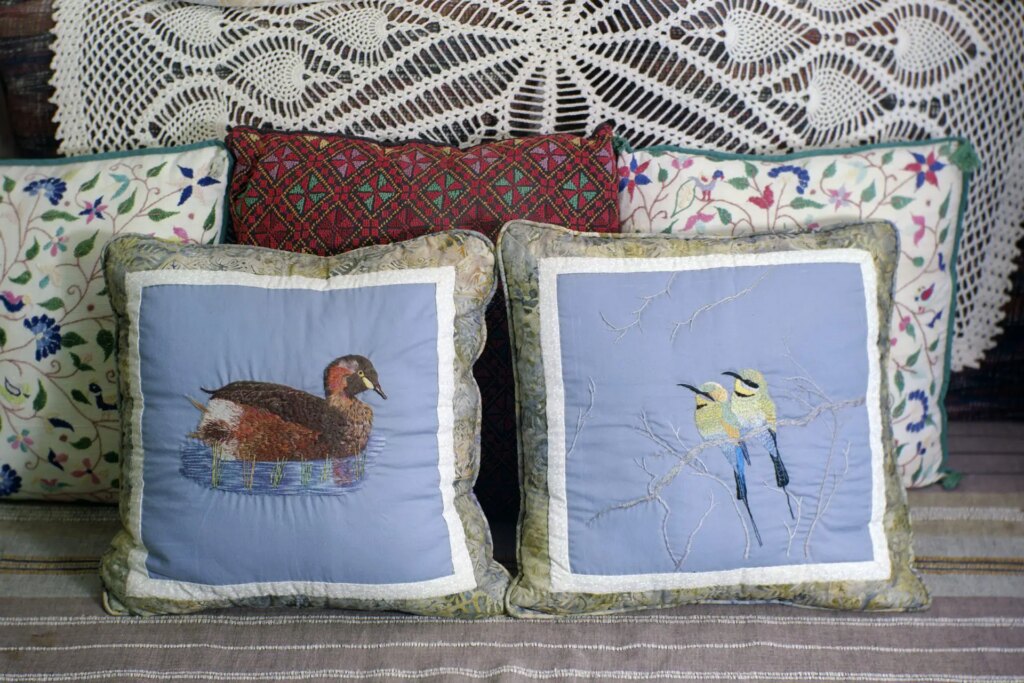
Cushion cover embroidery work (Australasian Grebe and Rainbow Bee-eaters) by Pam Foale. The beautiful crochet work at the back is by Delmay Likaveke. I opened the shutter on B for about half a second and triggered two wireless remote flashes while it was open, having already flash-metered the scene. The resolution isn’t bad here.
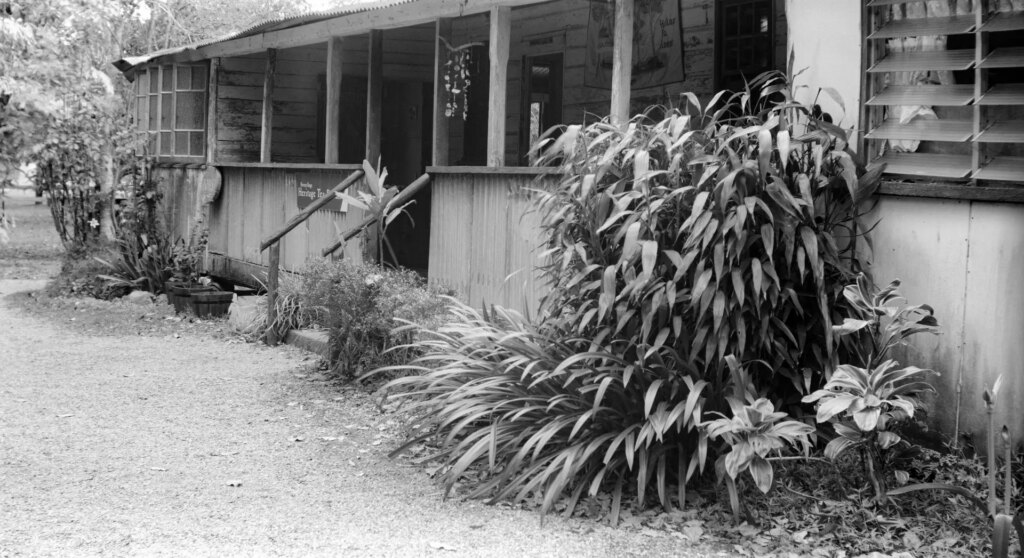
I wanted to include a shot made with a film that also has some ‘heritage’ befitting the camera’s age and thought I might as well also shoot a subject with a modicum of (post-colonial) history attached to it. I chose FP4 because it’s the descendent of Ilford ‘FP’ (Fine grain Panchromatic) which dates to 1935. (Couldn’t bring myself to shell out the current price for expired Verichrome Pan, sorry!).
As you can probably tell, getting the old No. 1A Autographic Kodak Junior into working order was a labour of love. Going through my grandfather’s images was also a journey of discovery. The camera is now more taped up than an elite athlete having a rough season, but it’s been a fun adventure. I like the look of the images, though perhaps the Anastigmat lens delivers better edges? I welcome comments from anyone with experience with these old Kodaks.
Thanks for reading! My Flickr page is here.
Share this post:
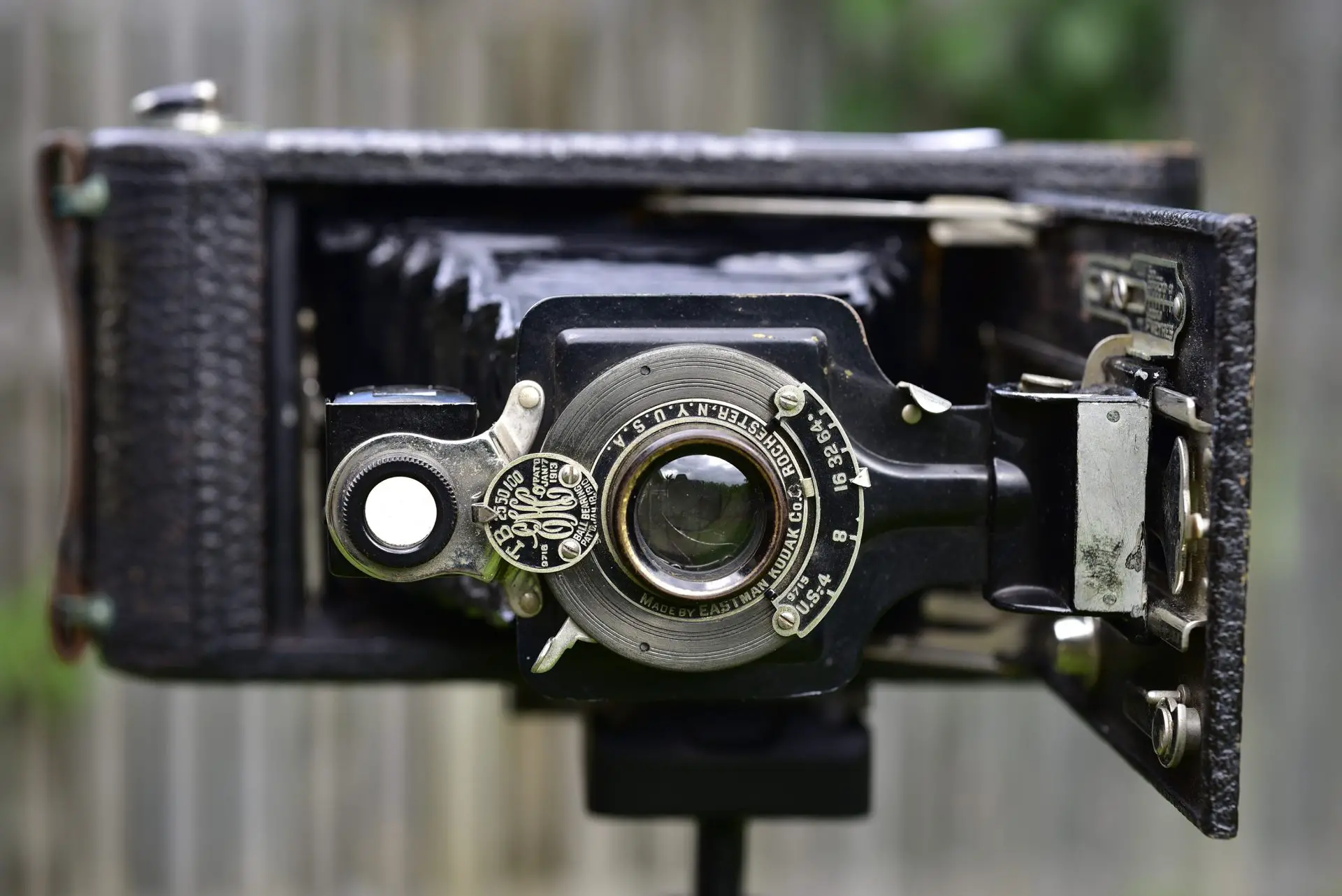
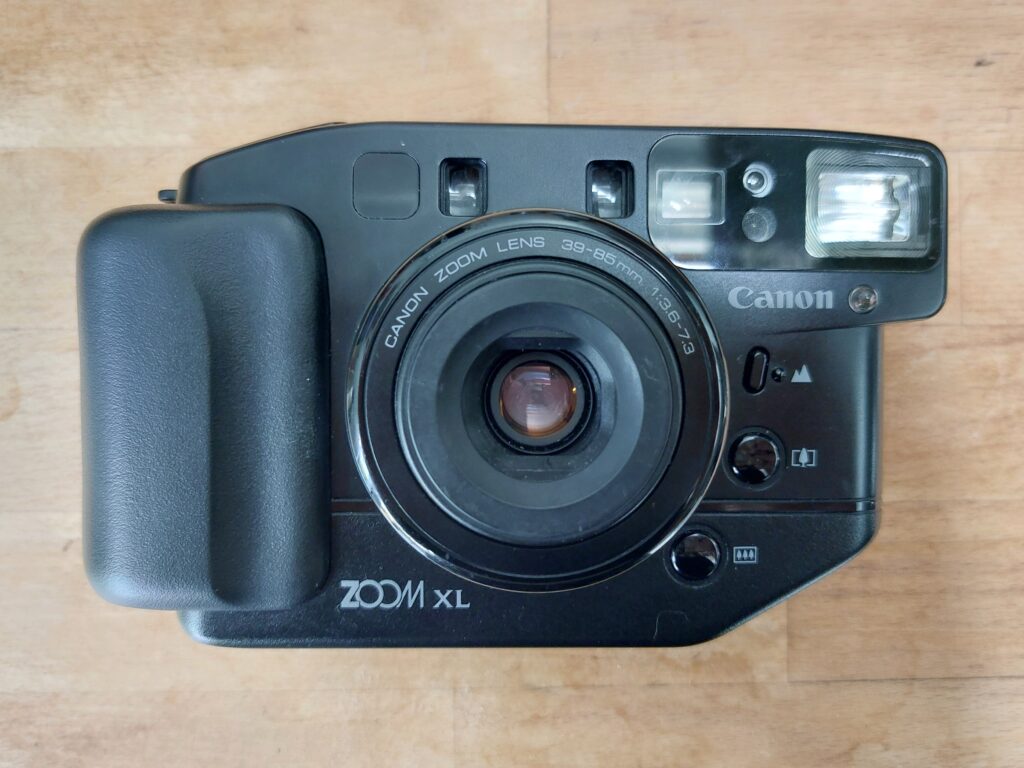
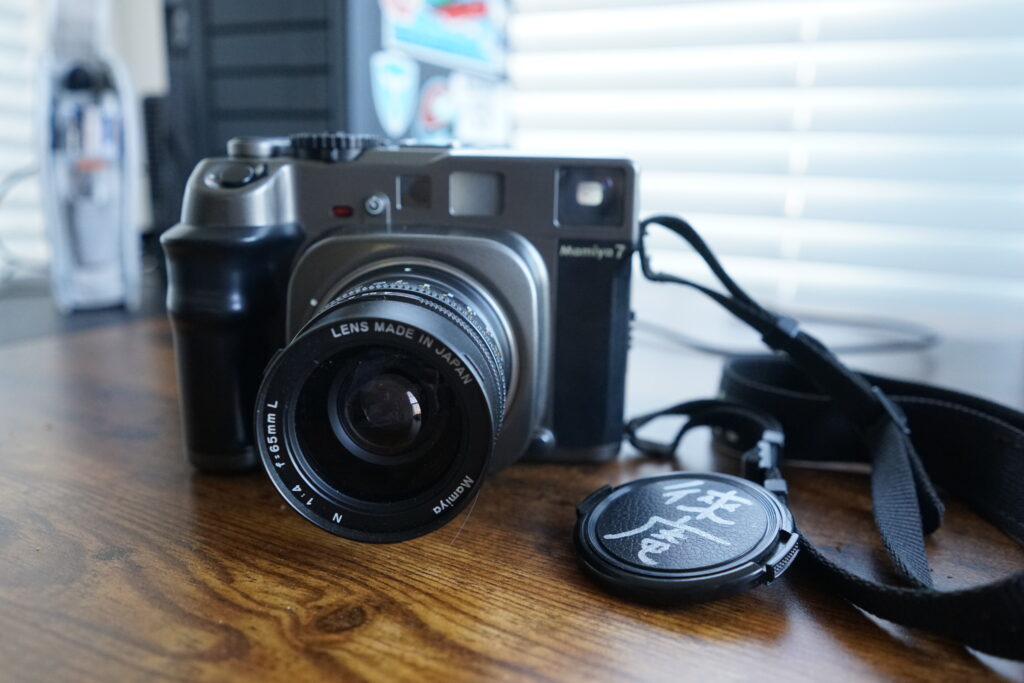
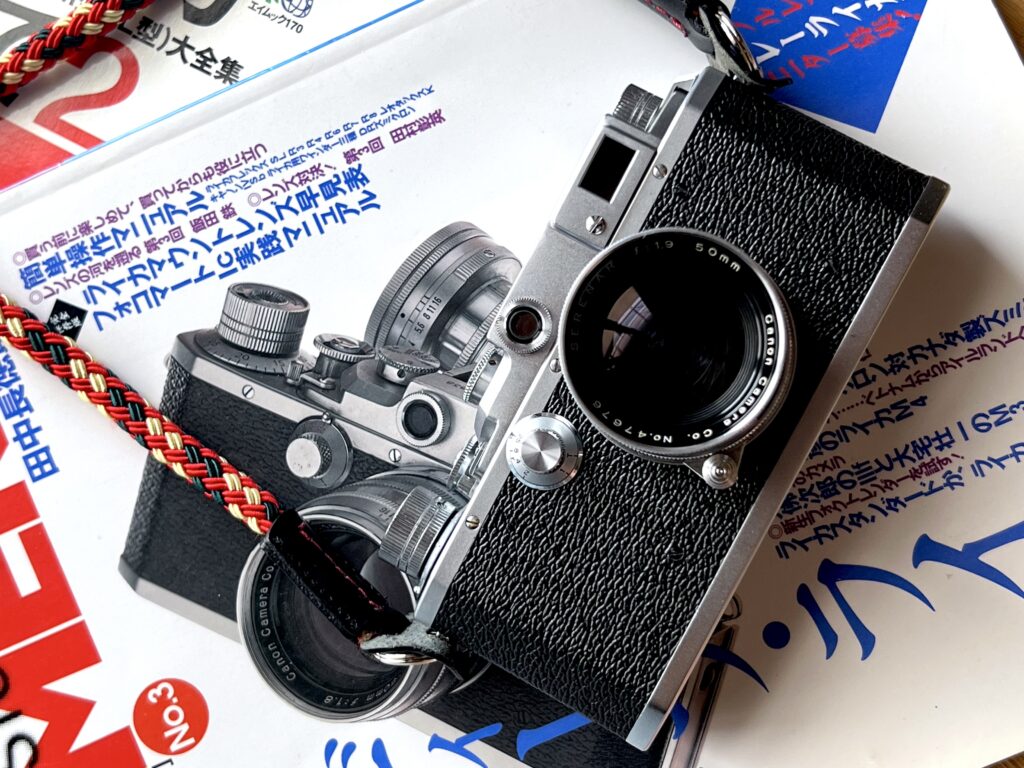
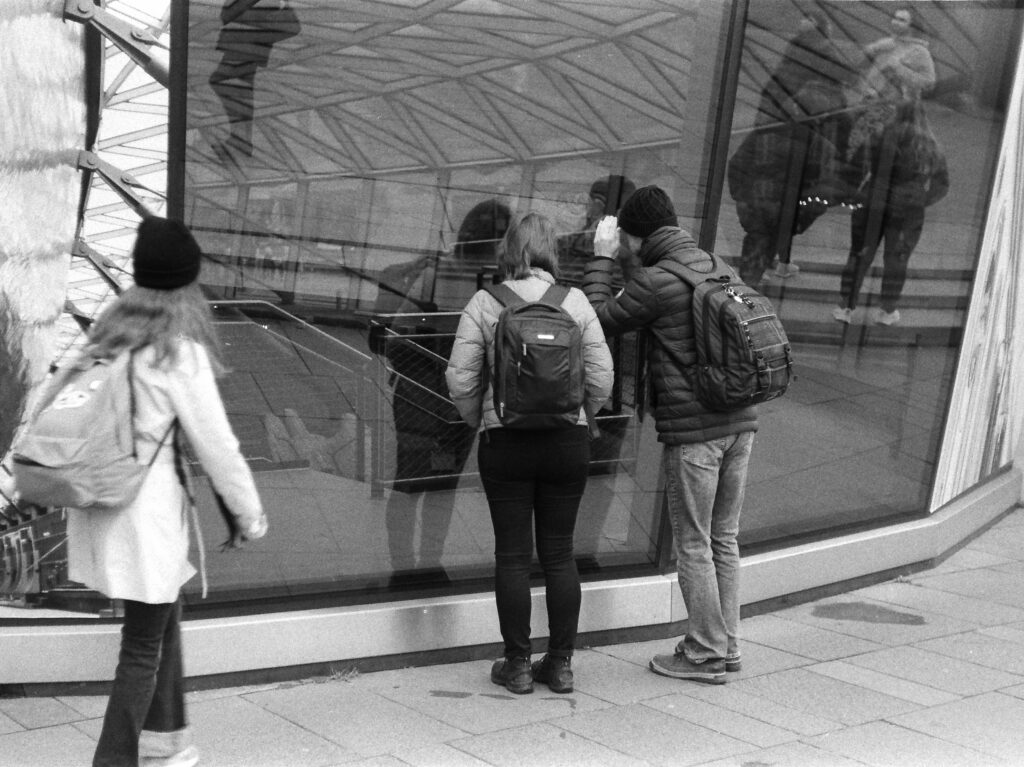





Comments
Stephen Meese on Kodak Junior No. 1A Autographic – Song of the Centenarian – from the 1920s to the 2020s – By Simon Foale
Comment posted: 03/02/2023
Comment posted: 03/02/2023
Rob on Kodak Junior No. 1A Autographic – Song of the Centenarian – from the 1920s to the 2020s – By Simon Foale
Comment posted: 03/02/2023
I am still using my Kodak #2 Folding autographic Brownie that I found online with the same Bausch and Lomb R/R lens Which was an optional upgrade when new) and it's original leather case (also an optional accessory)
More than half a million models were made between 1915 and 1926, with various design tweaks made along the way. In January 1917, the square ended cases changed to a rounded version from serial number 133,301 - as my camera is the square ended model serial Number 33082 I have narowed it down to either late 1915 or very early 1916.
I am constantly amazed by the quality of images this little camera is capable of producing
I wrote about it in my blog, along with images etc at; https://bs70926.wixsite.com/robart/post/how-little-things-have-changed
Comment posted: 03/02/2023
Stephen Fretz on Kodak Junior No. 1A Autographic – Song of the Centenarian – from the 1920s to the 2020s – By Simon Foale
Comment posted: 03/02/2023
Comment posted: 03/02/2023
Alex on Kodak Junior No. 1A Autographic – Song of the Centenarian – from the 1920s to the 2020s – By Simon Foale
Comment posted: 03/02/2023
Comment posted: 03/02/2023
Murray Kriner on Kodak Junior No. 1A Autographic – Song of the Centenarian – from the 1920s to the 2020s – By Simon Foale
Comment posted: 03/02/2023
Was thrilled to see the expose on your forebears prize Kodak folder, since I've owned one for nearly a decade, and debated about the mask and just how to facilitate how many winds on for each exposure after reading others thoughts on the critical matter. My pause came when I happened upon the idea of milling out a new window for 120 film stock, and brazing up the 116 spigot for ease of use, which seemed heresy to anyone who has treasured my vintage and antique Kodak's like I have. Perhaps a donor door from a parts camera, but not the original article from these museum pieces. Still there's the ISO factor with current film being just too sensitive, which I still see as a small hurdle in extracting every nuance of the period-look that I find so fascinating in using these items. Never wanted to become a chemist until I changed into photography, but I've never let it stop me from going forward before this time. Await with relish, any further reviews you might be so thoughtful to produce for our meagre sponsorship, but know I'll still be looking for your efforts in the future, God willing and the River doesn't overrun it's muddy banks. Stay well and content with the fact that Cyrils' legacy is much appreciated, as is yours.
Warmest Regards,
Murray Kriner
Comment posted: 03/02/2023
Kurt Ingham on Kodak Junior No. 1A Autographic – Song of the Centenarian – from the 1920s to the 2020s – By Simon Foale
Comment posted: 03/02/2023
Comment posted: 03/02/2023
davesurrey on Kodak Junior No. 1A Autographic – Song of the Centenarian – from the 1920s to the 2020s – By Simon Foale
Comment posted: 04/02/2023
It nudges me to take out my Folding Pocket Kodak 3A when it's sunnier days.
Mine doesn't come with history like yours did but it's in beautiful condition with its red bellows.
Made between 1908-1909 it took 122 film, long gone, so, like you, I have a set of converters to take 120.
Perhaps I'll share the results on here after the UK Winter is over.
Comment posted: 04/02/2023
Joe Van Cleave on Kodak Junior No. 1A Autographic – Song of the Centenarian – from the 1920s to the 2020s – By Simon Foale
Comment posted: 04/02/2023
Comment posted: 04/02/2023
Mike Foale on Kodak Junior No. 1A Autographic – Song of the Centenarian – from the 1920s to the 2020s – By Simon Foale
Comment posted: 20/04/2023
Comment posted: 20/04/2023
Bradley Goodchild on Kodak Junior No. 1A Autographic – Song of the Centenarian – from the 1920s to the 2020s – By Simon Foale
Comment posted: 14/11/2023
Thank you so much for your Post, I came across this as I was researching the Value of my No1 A Junior Kodak as I was thinking of selling it!... Apparently it only worth about $50... Haha oh well I'm not bothered about the money but I would like to see it go to someone who would restore it!. And use it as I think it's so sad to just let it disappear into time as the engineering is a work of art!.... If you know anyone who would like it please Email me
[email protected]
Comment posted: 14/11/2023